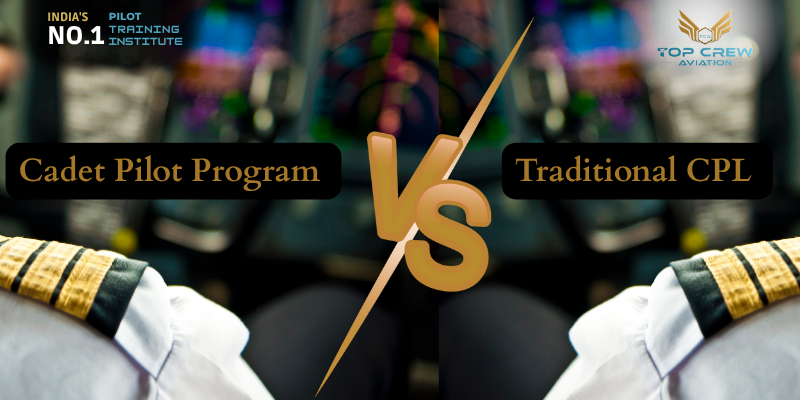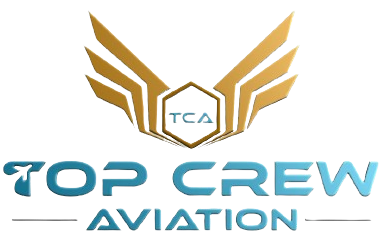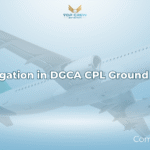
Becoming a commercial pilot is a dream for many aviation enthusiasts who want to fly aircraft and work with airlines. It’s a career that offers excitement, responsibility, and significant growth opportunities. India’s aviation industry is rapidly expanding with growing airlines, new airports, and a rising demand for trained pilots. If you’re planning to become a pilot, you’ll likely come across two primary training paths – the Cadet Pilot Program and the Traditional CPL (Commercial Pilot License) route. Both are valid options for achieving your dream of becoming a pilot in India.
Choosing the right flight school is crucial for building proper flying skills and ensuring a smooth path toward a Commercial Pilot License (CPL). The cost of pilot training depends on various factors such as location, flight school, and whether you choose a cadet or traditional program. Many Indian students opt to do a CPL course abroad due to better weather conditions, newer aircraft, and international exposure. Both cadet and traditional CPL routes aim to make you a licensed commercial pilot, but they differ in training process, cost, placement opportunities, and overall structure.
The Cadet Pilot Program is typically offered by airlines in collaboration with flight schools. Candidates are selected through exams and interviews, and upon successful completion, they may get an opportunity to work as a First Officer with that airline. It’s a structured, airline-specific path.
The Traditional CPL route, however, offers more freedom. You choose your flight school, manage your schedule, and complete the training at your own pace. After obtaining your CPL, you apply independently to airlines for a job.
In this blog, we will explain both paths in simple language and compare their advantages and disadvantages, helping you decide which one suits your aviation career goals best.
What is a Cadet Pilot Program?
A Cadet Pilot Program is a structured training course offered by airlines in partnership with selected flight schools. It is designed for students with little or no flying experience, aiming to train them step-by-step to become airline-ready pilots. The program covers everything—from aviation theory to simulator practice and real-world flying experience.
Once selected, cadets undergo a fixed training schedule, which usually includes:
- Ground School – Covers subjects like air regulations, weather (meteorology), and navigation.
- Simulator Sessions – Helps practice flying skills in a safe and controlled environment.
- Flying Hours – Involves actual aircraft flying experience under supervision.
- Airline-Specific Training – Focuses on standard operating procedures (SOPs) used by the particular airline.
After completing all stages, cadets are typically offered positions as First Officers (co-pilots). However, this final placement depends on their training performance and the availability of jobs with the airline.
Popular Cadet Pilot Programs (India and Abroad)
- IndiGo Cadet Program – Structured training with partnered flying schools and potential First Officer placement.
- AirAsia Cadet Program – Offers freshers a hands-on path to becoming airline-ready.
- Qatar Airways Cadet Program – Provides international training and a chance to join a world-class airline.
- Emirates National Cadet Pilot Program – Offers top-notch training, mainly for UAE nationals.
- Singapore Airlines Cadet Program – Known for its rigorous training and long-term career security.
What is the Traditional CPL Route?
The Traditional CPL route involves independently joining a flight school to obtain a Commercial Pilot License. There is no tie-up with any airline during training. After completing the course, you can apply for pilot jobs in different airlines or aviation sectors.
This route typically includes:
- DGCA Class 1 Medical – A mandatory fitness test required before flying.
- Ground Training and Exams – Subjects include Air Regulations, Navigation, Meteorology, and Technical.
- Flying Training – Minimum 200 hours of flight training as per DGCA standards.
- RT (Radio Telephony) License – Mandatory license for operating aircraft communication systems.
- CPL Issuance – Commercial Pilot License granted by DGCA (India) or other civil aviation authorities abroad.
Once you have your CPL, you can apply to multiple airlines. Each airline has its selection process that may include written exams, interviews, simulator assessments, and medical re-evaluation.
Key Differences Between Cadet Pilot Program and Traditional CPL
| Feature | Cadet Pilot Program | Traditional CPL |
| Airline Tie-up | Yes, linked to a specific airline | No, completely independent |
| Job Guarantee | Conditional (based on performance) | No guarantee |
| Cost | Higher (INR 1.1 – 1.5 Crores) | Lower (INR 45 – 75 Lakhs) |
| Training Duration | Fixed and fast-tracked | Flexible and student-paced |
| Entry Requirements | Strict selection (exams, interviews) | Moderate eligibility |
| Training Quality | Standardized and airline-specific | Varies by school |
| Flexibility | Rigid, airline-structured | High flexibility in pace and location |
Pros of the Cadet Pilot Program
- Airline Placement Opportunity: Cadets may be directly placed as First Officers with the airline after successful training.
- Standardized Training: Programs follow high-quality, airline-approved training systems with advanced simulators and experienced instructors.
- Fast-Tracked Career: Cadet programs usually finish within 18–24 months, allowing quicker entry into the workforce.
- Training Quality Assurance: Training takes place in certified, reputable schools, ensuring fewer chances of poor-quality instruction.
- Early Exposure to Airline Culture: From day one, cadets are trained using real airline SOPs, Crew Resource Management (CRM), and cockpit procedures.
Cons of Cadet Pilot Program
- Very Expensive:The program costs between INR 1.1 and 1.5 Crores, often requiring heavy loans.
- No Guaranteed Job: Despite airline links, job placement depends on cadet performance and job openings.
- Highly Competitive Entry: Selection involves tough exams, psychometric tests, and interviews with limited seats.
- Rigid Structure: You must stick to the fixed schedule and can’t change flight schools or training plans.
- Financial Risk: Failure to complete due to health, academic, or personal reasons can lead to significant financial losses.
Pros of the Traditional CPL Route
- Lower Cost: Training in India costs INR 45–60 Lakhs; abroad (USA, New Zealand, etc.), around INR 55–75 Lakhs.
- Flexible Training: Choose your school, location, and pace. Ideal for students balancing other commitments.
- Multiple Career Paths: After CPL, you can work as a flight instructor, join charter services, or pursue a Type Rating later.
- Retake-Friendly: In case of failure or delay, you can re-attempt without significant financial losses.
- Financial Control: You can pay in parts or take loans progressively. Some students split training between India and abroad to manage costs better.
Cons of Traditional CPL Route
- No Job Guarantee: You need to apply to each airline individually and clear their selection stages independently.
- Inconsistent Training Quality: Not all schools offer the same quality—some lack modern aircraft or experienced instructors.
- No Airline-Specific Training:You’ll need to learn airline SOPs and cockpit procedures separately before airline assessments.
- Requires Self-Discipline: You’re responsible for managing your progress, scheduling, and compliance.
- Slower Entry into Career: It may take 2–4 years to complete training, build hours, do a Type Rating, and secure a job.
Career Path Comparison
Cadet Program Career Path:
- Selection via airline exams and interviews
- DGCA Class 1 Medical
- Ground School + Exams
- Flying Training
- DGCA CPL + Multi-Engine + IR
- Airline Jet Induction Training
- Type Rating on specific aircraft
- First Officer placement (performance-based)
Traditional CPL Career Path:
- DGCA Class 1 Medical
- Join a flight school (India/abroad)
- Ground School + DGCA Exams
- Flying Training (200 hours)
- RT License + CPL Issued
- Apply to airlines individually.
- Type Rating (self-funded)
- Job offer after clearing airline assessments
Which One Should You Choose?
There’s no one-size-fits-all answer, but here’s a quick guide:
| Scenario | Better Option |
| High budget and want structured training | Cadet Pilot Program |
| Want lower costs and have time | Traditional CPL |
| Need early job assurance | Cadet Pilot Program |
| Want school and pace flexibility | Traditional CPL |
| Comfortable with strict selection process | Cadet Pilot Program or Traditional CPL |
Conclusion
Both the Cadet Pilot Program and the Traditional CPL Route can help you become a commercial pilot in India. The choice depends on your budget, flexibility, risk tolerance, and career goals. The cadet path offers structure, faster job readiness, and direct airline exposure—but at a higher cost and selection pressure. The traditional path provides more freedom, cost control, and broader career choices—but with no guaranteed job.
If you’re confident, focused, and financially ready, the cadet path may suit you. If you need flexibility, prefer to train at your own pace, or want to explore various aviation jobs before joining an airline, the traditional CPL path is ideal.
No matter which path you choose, always:
- Research DGCA-approved flight schools
- Understand complete training costs (including Type Rating)
- Prepare thoroughly for written and simulator exams.
- Stay updated with industry changes.
Your pilot career in India begins with the right decision. With dedication, smart planning, and quality training, your dream of flying high can become a reality. ✈️
Frequently Asked Questions
No FAQs found.



